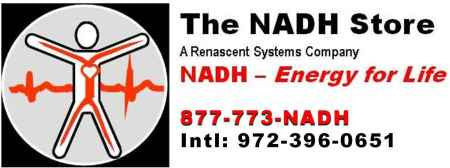Second Blog News
Andrea ONeil
-
Swongag on
cialis online cheap
-
enfolog on
https://fcialisj.com/ – best place to buy cialis online
-
Swongag on
Alternativa A Propecia Originale Phyprope buy cialis online no prescription Creejepe Online Apotheke Viagra Ohne Rezept
-
Amy on
If you do a quick Google search for the terms NAD+ and NADH, you will find countless misleading articles promoting NAD+ and the supposed “differences” between the two – promoted by companies that make NAD+ supplements. Many use complicated scientific terms thinking they can outsmart the consumer by misleading them with big fancy-sounding words. In this article, we give you the TRUE differences between NAD+ and NADH supplements.
NAD+is simply the oxidized form of NADH, has low energy versus NADH’s high energy profile, and gets destroyed by stomach acid. NADH is produced in the glycolysis and Krebs cycle. It is used in the production of ATP in the electron transport chain. NAD+ does not easily cross the blood-brain barrier, unlike the more stable NADH – especially the formulation used in Enada. The “H” actually stands for high-energy hydrogen and indicates that this substance is in the most biologically active form possible.
NADH is the abbreviation for the naturally occurring biological substance, nicotinamide adenine dinucleotide hydride. Often referred to as coenzyme 1, NADH is the body’s top ranked coenzyme, a facilitator of numerous biological reactions. NADH is necessary for cellular development and energy production: It is essential to produce energy from food and is the principal carrier of electrons in the energy-producing process in the cells. NADH is also an important anti-oxidant; in fact, scientists acknowledge that NADH is the most powerful antioxidant to protect cells from damage by harmful substances. In summary, NADH is a highly powerful form of vitamin B3 commonly referred to as niacin or niacinamide.
NADH is biologically ranked and identified as coenzyme 1, the coenzyme or cofactor needed for numerous enzymes that are involved in the cellular energy production. A deficiency of NADH will result in an energy deficit at the cellular level, which causes symptoms of fatigue. When the body is deficient in NADH, it is kind of like a car that has run out of gasoline. The more NADH a cell has available, the more energy it can produce. Unfortunately, the production of NADH in our bodies declines as we age, and so does the production of NADH-dependent enzymes, particularly those enzymes involved with energy production.
An exclusive stabilized, absorbable, patented tablet form of NADH has been marketed as a dietary supplement in the United States since 1995. NADH is a very sensitive substance. It degrades rapidly under the influence of light, humidity. temperature, and other factors. For example, it is degraded by milk sugar, also known as lactose, and of the classical tablet filler agents commonly used in many drugs and nutritional supplements. It took more than five years of extensive research to develop a stabilized, oral, absorbable form of NADH that does not use this type of filling agent. This special formulation is now covered by several worldwide patents and was given the brand name ENADA. To date, hundreds of thousands of consumers have experienced many beneficial effects from this product.
Dr. Birkmayer is the original founder of using NADH as a supplement.
Niacin is another term for Nicotinamide also known as Vitamin B-3. As you can deduce from the name, Nicotinamide is the pre-precursor of Nicotinamide Adenine Dinucleotide (NADH). Even very high dosages of Niacin do not increase the NADH level in the body. The same holds by the way for NAD+, the oxidized form of NADH. Niacin in such high dosage of 250 mg causes red flashes and rashes on the skin and some other allergic reactions. 1 (one) kg of Niacin costs between 25 to 50 USD. That means one tablet of 250 mg costs about 0.6 cents. The entire bottle of 100 tablets costs 60 cents production cost. – Dr. George Birkmayer

buy cialis on line